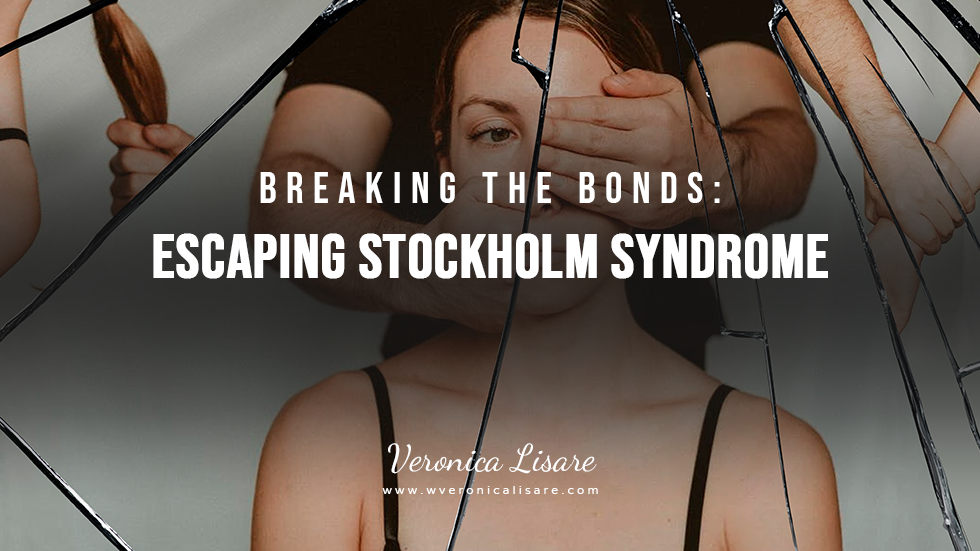|
There may be times when you’d think the world is out to get you. When everything seems to be spiraling down, and you can’t get out of the routine, there will always be a way out.
“People deserve what they tolerate.” This is one of the most famous lines people quote regarding toxic and abusive relationships. And those who haven’t experienced it are the loudest to say it. But while this has been socially established to stop tolerating abuse, it seems to have done the opposite. Because of this quote, more people might stay with the thought that maybe they deserve to suffer in the wrong relationship because they have been too dumb to tolerate it earlier on. However, staying or tolerating a relationship doesn’t necessarily mean they wish and choose to suffer. Instead, a part of the brain will continue to believe that staying in the problematic environment is safer, associating it as a survival tactic to stay safe from the abuse. And this is commonly known as the Stockholm syndrome. What is Stockholm Syndrome? Stockholm is a trauma bond that happens when people are in an abusive relationship, one where it has spiraled down to the point that the abused feels that they’re unable to leave. And this inability to leave is amplified when the abused receives the slightest good behavior. When people are continuously surrounded by darkness, the slightest sign of light can make them hopeful that there will be better days – or in this situation, a way out of the hellhole. This is what Stockholm is; the constant anticipation that the slightest kindness is a sign that there will be a way out of the abuse and perhaps, into a better relationship. However, most of the time, there isn’t. And it’s up to the abused to take a step out of the situation. Stop blaming yourself This is easier said than done. Most of the time, people who end up in abusive relationships blame themselves for not seeing the signs and leaving earlier. But the real thing is, it’s not very easy seeing the signs not unless you’re looking at them in hindsight. Everyone is looking for love, and when they’re provided with it, it can be easy to overlook flaws and issues. You are not alone. And this isn’t an issue or a situation that you have experienced in isolation. Reality Training One of the most common defense mechanisms people’s brains are wired to do when faced with events they aren’t comfortable with is denial. Unfortunately, when things go haywire, people’s brains might be too stressed and pressured to function, and they might begin to shut down – the brain’s last attempt at protecting the person. This leads to blocking out or forgetting those stressful events. Wiping away these memories makes room for the abuser’s empty promises. The cycle will continue unless the abused proactively takes part in remembering the abuse. One way to do this is by keeping tabs on what’s happening right after they happen. You can write every harmful or dangerous thing your abuser has done. Of course, without letting the latter know about it. It’s important to remain factual and be thorough in recording what has happened. Seek support Breaking and going through trauma is hard to do alone. You would do better with people’s help. This support can come from the people who have also experienced the same trauma that you’re going through. In the memoir by Veronica Lisare entitled The Other Side of Fear, she shares her own experience and what she has done to overcome her fear of moving on from her abuse and trauma. In line with finding support from others, you should also seek help from professionals. They are trained to help you process even your past traumas, so you can completely heal and move on from them. Shift your perspective You’re stuck in the cycle because your brain has already found it difficult to break free from how it’s processing the situation. It’s about time you use a different perspective to look at the problem. You may use your younger or older self, your family, or even any celebrity that you look up to. This may need a lot of practice and can be prone to regressing your habit – mistaking your emotions and blocking your memories. But, as with every other process, there won’t be any result without consistency of practice. Think of your younger self, who’s continuously looked forward to meeting their soulmate, and spending time with their loved one. What would they have thought seeing you in this situation? Think of your future self. What would they have wanted you to do to break free from the situation hurting you? Focus on feeling When you’re suffering for too long, it’s easy to become numb and turn away from feeling knowing all you’ve felt so far is pain. This is primarily a common thing for those suffering from traumas. People can repress any negative thoughts that they can associate with their trauma. Rather than doing this, they need to welcome their emotions and do the opposite to process them. Sit for a few minutes at home and let yourself feel. No matter how heavy it may be, let it be. Letting yourself feel these emotions rather than avoiding them will allow you and your brain to know and understand what you are going through and process why you’re feeling that way. Trauma can be a complicated thing to process. And when we’re exposed to it for a long time, staying and letting things be may seem more manageable. But the choice to let go is the biggest challenge to face. After this, things may be smooth sailing from then on out.
1 Comment
12/28/2022 11:20:59 pm
Hello,
Reply
Leave a Reply. |

 RSS Feed
RSS Feed
